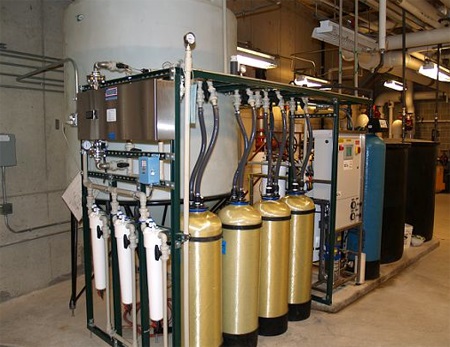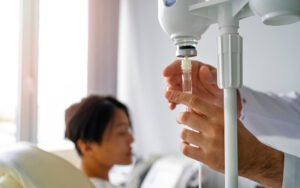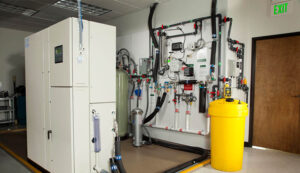Ultrapure Water and Hydro Water Purification Systems
We assume that the water we drink is the cleanest form of it, but that is far from reality. Of course, our water isn’t unhealthy or impure, either. Different levels of purity are required for different processes, and some of the cleanest forms of water aren’t safe or healthy for consumption anyway.
The hydro water purification systems that are used to power electricity grids, for example, supply water for irrigation, drinking, and more. However, such large-scale water purification plants cannot provide the cleanest form of water for something like hemodialysis, a procedure that injects ultra-pure water into your bloodstream. For that, we use smaller-scale carbon filtration systems with reverse osmosis.
However, these smaller-scale systems are neither efficient nor sustainable. So, a question arises, can we use the best of both worlds? The scalable nature of the hydro water purification system itself but with the ultra-purity of Reverse Osmosis? Why not use a large-scale system to provide clean water for hemodialysis and other uses? Let’s find out.

The Existing Methods
There are two main systems for water purification in this context–Reverse Osmosis and hydroelectric power plants. The former is used for ultra-pure water, and the latter provides regular drinking water. The primary problem here is not from a process standpoint but from an environmental one. A single RO machine for hemodialysis is an environmentally unfriendly problem that needs both a better system for water purification and a less wasteful prospect to do so. A hydroelectric power plant has its problems but has a more significant net benefit to it.
How Pure is Drinking Water?
Our drinking water is as ‘pure’ as it is free from bacteria and other harmful organic matter. The purity of drinking water isn’t determined by its overall purity, as it has plenty of chemical additives to kill off the bacteria and provide its taste and odor. In fact, calling any form of water ‘pure’ can be a misnomer because pure water doesn’t exist. Even ultra-pure water is just a name, and it contains the least amount of contaminants–so much so that it won’t give us the benefits of water if we drink it.
Drinking water also contains fluoride and chlorine, which are additives in the water used to enhance the taste and odor and remove bacterial content. This is necessary as we are not used to the taste of unfiltered water, and you might have noticed that if you drink water straight from a stream, it has a certain taste to it.
A hydro water purification system usually produces this type of filtered water, which does not remove everything–just the contaminants. Hemodialysis does require a different kind of filtration system, as even the most effective carbon filtration systems fitted with the best water filter cartridge won’t be enough to provide the level of purity required for the medical procedure.
Hemodialysis and Water Purification
Your kidneys filter your blood from wastes and other unwanted substances in your body. They have a critical function that must be performed regularly, or else it can be fatal. However, when a kidney fails, its neither instant nor is it immediately lethal. A person can live with a failed kidney, but they still need to filter waste from their blood. Essentially, they need the function, but not the kidney itself.
That is what hemodialysis tends to solve, as it filters the waste from your blood like a regular, healthy kidney. Hemodialysis also passes water through your body, and having regular drinking water within the insides of your bloodstream would have incredibly disastrous effects. For that, we need to have the cleanest form of water possible–ultra-pure water–to conduct hemodialysis.
This treatment must be done regularly; having patients in a hospital for it is impractical. Most hemodialysis machines are suitable for home use, and water needs to be constantly purified for it to be used for this procedure.
Reverse Osmosis and Dialysis Machines
The hemodialysis procedure is complicated, but the main point of contention is the water purification systems used in these machines. Using a hydro water purification system, you can produce drinking water by filtering bacteria and providing taste. However, reverse osmosis requires the complete and total removal of such additives and contaminants, and large-scale carbon filtration systems are not a viable method.
There is one significant factor that prevents such large-scale use, and that is the amount of wastewater runoff from an RO procedure.

Environmental Challenges in Water Purification
Environmental friendliness isn’t just a trend but a valid, necessary concern, and it is also present here in the water purification sector. Despite their other-wise pro-sustainability nature, hydro water purification system–or rather, the plants and dams they are used in–still have plenty of sustainability concerns. Here, we’ll be addressing them both.
Reverse Osmosis and Ultra-Pure Water
Approximately five more gallons of wastewater are generated during reverse osmosis for every ultra-pure water. While it does produce the cleanest, most pure form of water suitable for hemodialysis, it is extremely wasteful on a larger scale. Most modern water purification systems need to develop more to account for this, and large hydro water purification systems are impractical for this solution.
That is not to mention the environmental factor. Hemodialysis patients use more water in just a few weeks of the procedure than a regular person consumes in their lifetime. This is only the water that patients are exposed to, meaning it is ultra-pure water that has already undergone RO and other filtration procedures.
Environmental concerns are already a discussion for RO systems, and hemodialysis machines–while effective–are impractical on a larger scale.
The Concerns Regarding Hydro Water Plants and Dams
Smaller hydro water purification devices exist, but as the title suggests, the idea here is to use an already large-scale, environmentally friendly system for water purification. The true large-scale ones are the hydroelectric power plants, and while the water purification and electricity generation are environmentally friendly enough, the dams themselves are concerning.
For one, creating a dam requires a river, one that is home to its own ecosystem. If a river changes its course naturally, it can harm the ecosystem it previously had. A dam, on the other hand, stops the flow of a river entirely. It also creates dangers of flooding where there weren’t any, and harms plant, animal, and marine life across the river and its surroundings.
Wastewater Management
Most hydroelectric plants are extremely sustainable solutions, despite the concerns surrounding their dams. They produce plenty of green energy, supply water, and filter it better than a regular carbon filtration system. However, while large-scale solutions for RO aren’t currently practical, proper wastewater management is another way to make existing water purification systems far less environmentally concerning.
The Roots of the Issue
Wastewater, despite the name, isn’t useless. It’s waste, but it can still be used in other areas where water is usable, such as being filtered again for reuse. The primary issue in a proper system isn’t the effectiveness of wastewater filtration but managing the wastewater.
Sustainable Drainage Systems, or SuDS, are a great example of highly effective and sustainable wastewater management methods. However, proper systems for managing water runoff also need to be industry standards to make full use of these systems. RO isn’t exclusive to hemodialysis either, as ultra-pure water is used in many other industries.
Some industry sectors do use large-scale water purification, such as semiconductor manufacturing. A single, large semiconductor fabrication plant can use 10 million gallons of water in a single day. That is what approximately 300,000 households can consume in a similar period. This water also has to be purified, and wastewater is generated, only adding to the problem.
Why Focus on a Hydro Water Purification System
The discussion around hemodialysis machines might seem irrelevant relative to chip fabrication plants, but they are part of a larger whole. At HydroCare, as an example, we are always looking for new ways to make existing processes better. For example, experimental hydro water purification systems do exist for smaller-scale use, but the problem that needs to be solved is the purification of water from such low-waste systems.
Giving something like hemodialysis machines a less wasteful system for ultra-pure water or simply improving its wastewater management can open the floodgates–pardon the pun–to a much larger-scale use case.
A hydroelectric power plant stands as an effective example of systems that have their problems but are offset by a much greater net benefit provided by them.
How Hydrocare is Making Change
At Hydrocare, we have a responsibility and a mission to provide the best possible treatment, but that doesn’t mean we don’t push for higher sustainability, regardless of the scale of the problem. We utilize hydro water filtration systems and the most efficient RO systems to provide ultra-pure water for hemodialysis and more.
Change comes with time, and our goal is to make use of the newest and most improved systems to change the industry, one system at a time. Asking questions like these is just one of the many steps we take, and taking a good look at even the best systems available and seeing where they can fall short too helps with our perspective on where to pivot the industry’s attention next.




